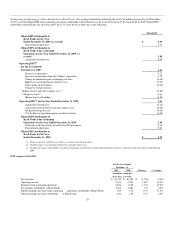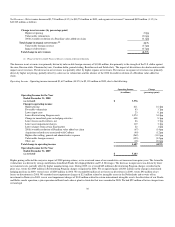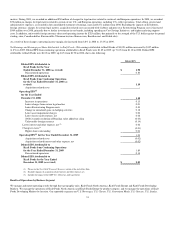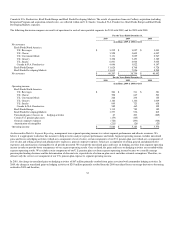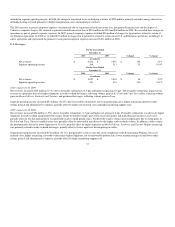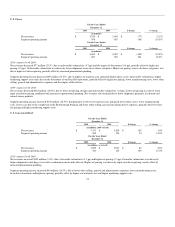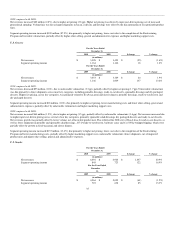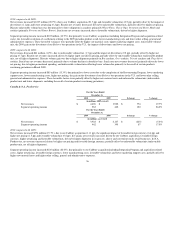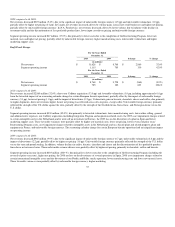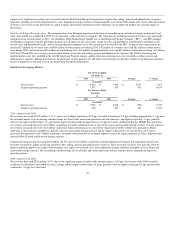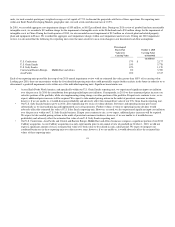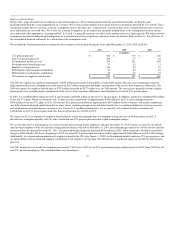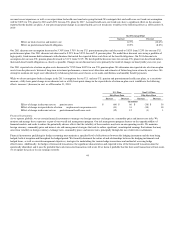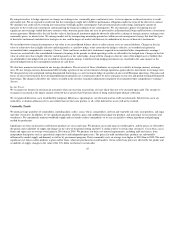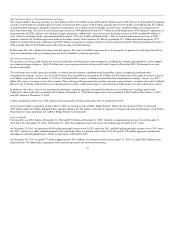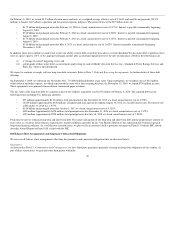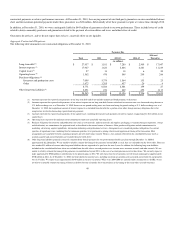Kraft 2010 Annual Report Download - page 42
Download and view the complete annual report
Please find page 42 of the 2010 Kraft annual report below. You can navigate through the pages in the report by either clicking on the pages listed below, or by using the keyword search tool below to find specific information within the annual report.
Eastern Europe, Middle East and Africa, net revenues decreased, driven primarily by unfavorable foreign currency, partially offset by higher net pricing
across most of the region and favorable volume/mix (improved product mix, net of lower shipments). In Latin America, net revenues increased, primarily
driven by higher net pricing across the region and favorable volume/mix (improved product mix, net of lower shipments), partially offset by unfavorable
foreign currency and the absence of the 2008 favorable resolution of a Brazilian value added tax claim. In Asia Pacific, net revenues increased, due to higher
net pricing across most of the region and favorable volume/mix (improved product mix, net of lower shipments), primarily in China, partially offset by
unfavorable foreign currency.
Segment operating income increased $121 million (14.8%), due primarily to higher net pricing, favorable volume/mix (improved product mix, net of lower
shipments), lower costs due to the completion of the Restructuring Program (including the reversal of prior year costs) and 2008 asset impairment charges
related to certain international intangible assets, a juice operation in Brazil and a cheese plant in Australia. These favorable variances were partially offset by
higher raw material costs, higher manufacturing costs, unfavorable foreign currency, higher other selling, general and administrative expenses, higher
marketing support costs and the absence of the 2008 favorable resolution of a Brazilian value added tax claim.
Venezuela - In the fourth quarter of 2009, the Venezuelan economy was classified as highly inflationary under accounting principles generally accepted in the
United States of America ("U.S. GAAP"). Effective January 1, 2010, we began accounting for our Venezuelan subsidiaries under highly inflationary
accounting rules, which principally means all transactions are recorded in U.S. dollars. On January 8, 2010, the Venezuelan government devalued its currency
and established a preferential exchange rate for imports of food, medicine and other essential items. Accordingly, we were required to revalue our net assets in
Venezuela. In July 2010, the Venezuelan government eliminated the secondary (or parallel) market exchange rate and replaced it with the government-
regulated Transaction System for Foreign Currency Denominate Securities ("SITME") rate. Accordingly, we were required to revalue those of our net assets
in Venezuela that we maintained at the parallel rate. Then on December 30, 2010, the Venezuelan government eliminated the preferential exchange rate.
Although the elimination of the preferential exchange rate did not immediately cause us to revalue our net assets in Venezuela, it will have further impacts to
our operating results in future periods. Venezuela now has two exchange rates: the official rate and the SITME rate. We used both the official rate and the
SITME rate to translate our Venezuelan operations into U.S. dollars, based on the nature of the operations of each individual subsidiary.
During 2010, we recorded approximately $115 million of unfavorable foreign currency impacts relating to highly inflationary accounting in Venezuela. This
included a one-time impact to translate cash of $34 million that we previously carried at the secondary rate. Upon the change to highly inflationary accounting
in January 2010, we were required to translate those U.S. dollars on hand using the official rate. Based on the current economic structure in Venezuela, we
expect our 2011 operating results will be negatively impacted by approximately another $25 to $50 million as a result of the change to highly inflationary
accounting and the devaluation of the Venezuelan bolivar.
Critical Accounting Policies
Note 1, Summary of Significant Accounting Policies, to the consolidated financial statements includes a summary of the significant accounting policies we
used to prepare our consolidated financial statements. We have discussed the selection and disclosure of our critical accounting policies and estimates with
our Audit Committee. The following is a review of the more significant assumptions and estimates, as well as the accounting policies we used to prepare our
consolidated financial statements.
Principles of Consolidation:
The consolidated financial statements include Kraft Foods, as well as our wholly owned and majority owned subsidiaries. Our domestic operating subsidiaries
report results as of the last Saturday of the year, and our international operating subsidiaries generally report results two weeks prior to the last Saturday of the
year. The results of operations of the newly acquired Cadbury are reported on the last day of the calendar month.
In 2010, we changed the consolidation date for certain European biscuits operations, which are included within our Kraft Foods Europe segment, and certain
operations in Asia Pacific and Latin America, which are included within our Kraft Foods Developing Markets segment. Previously, these operations primarily
reported period-end results one month or two weeks prior to the end of the period. Now our Kraft Foods Europe segment primarily reports period-end
39


